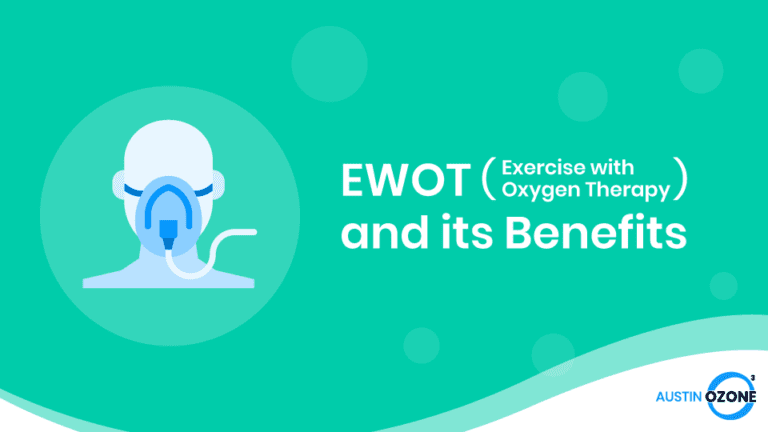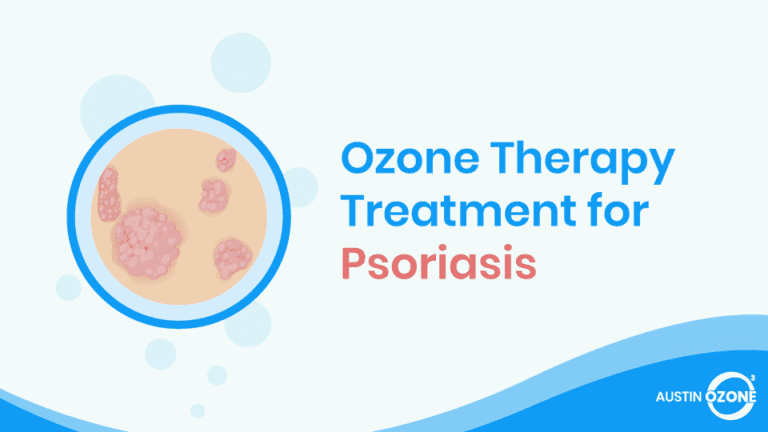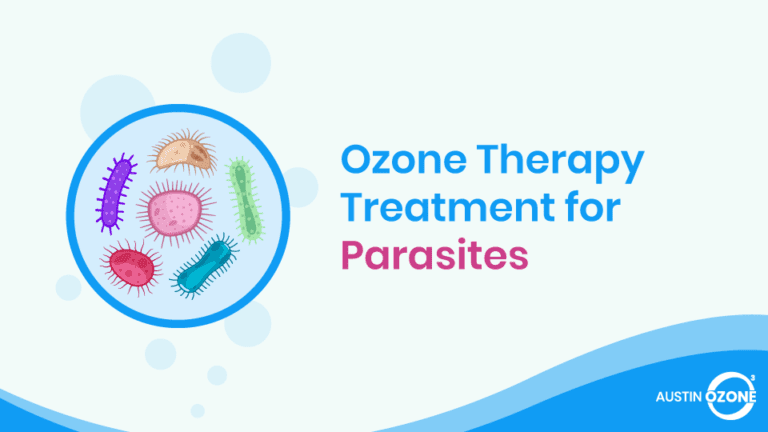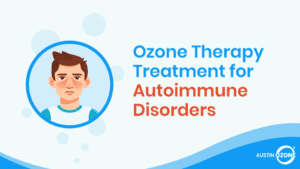We rely on oxygen not only as the air we breathe but also for the stimulation of our brain activity, energy level, and detoxification of our blood, among others. Having less than 20% oxygen in the brain may lead to sleep apnea, poor concentration, mood swings, and restlessness.
Our overall wellness depends on the amount of oxygen in our body, as it determines the development, maintenance, and repair of our cells. It helps in the synthesis of energy that every cell in the body needs to carry out its metabolic and physiologic functions.
Oxygen also acts as an anti-inflammatory agent within our tissues. It is crucial in strengthening our immune system, as it drives the cells that make up our body’s defense against viruses. As such, increasing our oxygen levels have healthy benefits such as the increased capacity to do physical activities and increased endurance.
EWOT Function and Mechanism
What is EWOT?
The Exercise with Oxygen Therapy (EWOT)5, also known as Multistep Oxygen Therapy, is a training system where the person exercising is breathing a high flow rate of oxygen-enriched air. This results in the increased oxygen-carrying capability of the red blood cells and blood plasma, the fluid part of the blood.
Who Needs EWOT?
The people who need EWOT are those who are experiencing functional oxygen deficiency. These people are burnt out from work and school or have chronic stress, unhealthy lifestyles, and serious diseases
EWOT is a natural medical treatment to re-oxygenate and detoxify anyone who wants to directly address the main cause of most health problems and quickly gain improved vitality. It is also described as an alternative method for training the body in rebuilding oxygen pathways in blood capillaries to improve blood circulation and oxygen absorption.
EWOT is a natural medical treatment to re-oxygenate and detoxify anyone who wants to directly address the main cause of most health problems and quickly gain improved vitality.
There is little oxygen suspended in the blood plasma aside from the red blood cells. However, there are body cells that rely on the blood plasma oxygen for normal functioning. A good example are the cells surrounding the capillaries — the tiny blood vessels that deliver nutrients and oxygen to tissues and organs.
So, when the oxygen level in the blood plasma gets depleted due to the lack of exercise, poor lifestyle, and prolonged stress, these capillaries become oxygen-famished.
What Happens When Your Body Lacks Oxygen?
One of the ill effects of oxygen-starved capillaries is the loss of fluid balance regulation. When these blood vessels lose fluid, they will absorb fluid to compensate the loss; hence, they become swollen and distended. This results in the constricted internal diameter of the capillaries.
As the capillaries’ diameter gets smaller, they lose the ability to properly distribute oxygen, minerals, and nutrients to tissues and organs.
Consequently, when the oxygen in the tissues is insufficient, the cells that house the mitochondrion are also badly affected. The mitochondria are the site of cellular respiration — the process of producing adenosine triphosphate (ATP)1, which is the body’s fuel.
Cells that are used for nonstop activities have multiple mitochondria and therefore require more oxygen to produce more ATP. When these cells are starved of oxygen, their normal cellular and physiological functions will be interrupted, causing different health conditions and diseases.
By the time you reach the age of 25, the body begins to drop its ability to absorb oxygen, which can adversely affect cellular respiration, division, and development.
According to Ulf Th.Zierau6, an endovascular specialist, phlebologist, and vascular surgeon at the Saphenion Vein Care Centers in Berlin, this oxygen deficiency usually impacts the heart, then the legs, and later, the brain.
Health Benefits of EWOT
Enhances Performance
The incorporation of increased oxygen supply with exercise leads to faster oxygen circulation. This allows for increased oxygen pressure in the veins, enabling the capillaries to repair the transfer mechanism in the body.
The strengthened mechanism will allow more oxygen to diffuse through the capillary wall to oxygen-thirsty tissues. Simply put, the EWOT supplies more oxygen through the body to increase the cell’s energy level, allowing us to perform more intensively and effectively.
Improves Metabolism and Cognitive Function
EWOT increases the body’s metabolism. It also improves memory and the brain’s processing speed, as the adequate supply of oxygen to the cells promotes quick stimuli-response mechanisms.
Slows Down Aging
The O2E2 Turbo Oxygen Training2, one of the many types of EWOT methods available, helps in the restoration of the oxygen’s capability to repair cells to rejuvenate the skin. This can be fused with other elements such as magnesium and sulfur to remove cancer cells and other chronic diseases.
Schedule an EWOT Session Today!
Diseases and Medical Conditions Treatable by EWOT
Oxygen Deficiencies
Extended oxygen deficiency can cause further deficiencies and diseases in the patient’s body. Examples are mitochondrial enzyme deficiencies, which underuse oxygen in the tissues. An oxygen shortage also occurs if the body uses more oxygen than it gets. The worst case is that it will lead to endothelial dysfunction, a condition that limits the transport of oxygen to the cells.
EWOT targets these conditions, as it can provide additional oxygen to the body, thereby correcting the functional oxygen deficiency.
Chronic Pain
Since all chronic pain, suffering, and diseases are mainly due to the lack of oxygen at the cellular level, the application of EWOT is critically important in correcting and improving the body’s oxygen level, in turn enabling the proper functioning of our immune system.
EWOT is beneficial in treating acute respiratory conditions like pneumonia, acute respiratory distress syndrome (ARDS), and severe asthma attack.
Respiratory Conditions
EWOT is beneficial in treating acute respiratory conditions like pneumonia, acute respiratory distress syndrome (ARDS), and severe asthma attack. Chronic conditions such as chronic obstructive pulmonary disease (COPD)3, heart failure, Cystic Fibrosis (CF), and sleep-related breathing disorders can also be supplemented by this therapy.
A study by Silvia Ulrich and colleagues8 tested the increase in exercise performance among patients with pulmonary arterial or chronic thrombo-embolic pulmonary hypertension if they were supplied with breathing oxygen-enriched air. The results showed that oxygen therapy was effective and provided potential for faster recovery.
Similarly, patients with Idiopathic Interstitial Pneumonia (IIP), an illness that affects the gas exchange because of pulmonary vascular insufficiency and peripheral muscle dysfunction, were tested with EWOT, and despite the difficulties that negatively affected the patients’ capacity to do physical activities, Troy and colleagues7 suggested that regular EWOT sessions improved the patients’ quality of life.
cells growth by
EWOT also fights cancer and increases the patient’s chances of recovery, as high-pressured oxygen decreases the cancer cells’ growth by 15 percent.
Cancer
EWOT also fights cancer and increases the patient’s chances of recovery, as high-pressured oxygen decreases the cancer cells’ growth by 15 percent4.
Age-related Diseases
EWOT is an anti-aging and rejuvenating treatment, as it delivers oxygen to the cells, tissues, and organs, thereby boosting blood oxygenation. In relation, it also helps in the prevention of age-related diseases such as diabetes, cataracts, macular degeneration, and fibromyalgia.
Lifestyle Problems
In terms of lifestyle, EWOT improves sleep and boosts energy for daily work and routine, in turn relieving stress and anxiety. It also enhances our vision, memory, and cardiovascular health.
Poor Circulation
A study published in the Journal of Phlebology and Lymphology7 demonstrated that using EWOT while exercising improved microcirculation in the legs.
The treatment also helps get the body back to its clean and natural state. The increased oxygen in the blood and tissues can protect us from diseases, bacteria, and other viruses by optimizing the cellular metabolic processes and enriching our blood with oxygen supply.
Conclusion
EWOT has shown many benefits since its discovery in the 1950s. Evidence of its effectiveness in increasing the body’s oxygen levels and treating various chronic diseases and lifestyle problems have been established over the years.
EWOT is non-invasive, extremely simple, affordable, and does not take a lot of time to do. It is a professionally researched and heavily investigated technique that can hinder the development of many of the health problems and diseases caused by poor oxygenation. With EWOT, you can be assured that your health is improved affordably and comfortably.
Schedule an Appointment Today
References
- EWOT (Exercise with oxygen therapy) benefits and uses. (2019, May 17). Retrieved from https://draxe.com/health/ewot-exercise-with-oxygen-therapy/
- Miraculous Wellness with Oxygen Enhanced Exercise and Rest (O2E2). (n.d.). Retrieved from https://s3.us-east-2.amazonaws.com/breathing.com/oxygen-miraculous-wellness.pdf
- Nishimura, M. (2016). High-flow nasal cannula oxygen therapy in adults: Physiological benefits, indication, clinical benefits, and adverse effects. Respiratory Care, 61(4), 529-541. https://doi.org/10.4187/respcare.04577
- SOL Integrative Wellness Center. (2020). Exercise with Oxygen Therapy (EWOT). Retrieved from https://www.sol-thrive.com/ewot
- Taylor, J. (2019). EWOT therapy, exercise with oxygen. Retrieved from https://www.oxygenhealingtherapies.com/EWOT_Regain_Maintain_Youth.html
- Th.Zierau, U. (2020). Oxygen therapy in varicose veins: Improvement of the microcirculation in the legs – Casuistic. Journal of Phlebology and Lymphology, 13(1), 20-22.
- Troy, L., Young, I.H., Lau, E. M. T., & Corte, T. J. (2016). Exercise pathophysiology and the role of oxygen therapy in idiopathic interstitial pneumonia. Asian Pacific Society of Respirology, 21, 1005–1014. 10.1111/resp.1265
- Ulrich, S., Hasler, E. D., Saxer, S., Furian, M., Müller-Mottet, S., Keusch, S., & Bloch, K. E. (2017). Effect of breathing oxygen-enriched air on exercise performance in patients with precapillary pulmonary hypertension: randomized, sham-controlled cross-over trial. European Heart Journal, 38(15),1159-1168. 10.1093/eurheartj/ehx099






